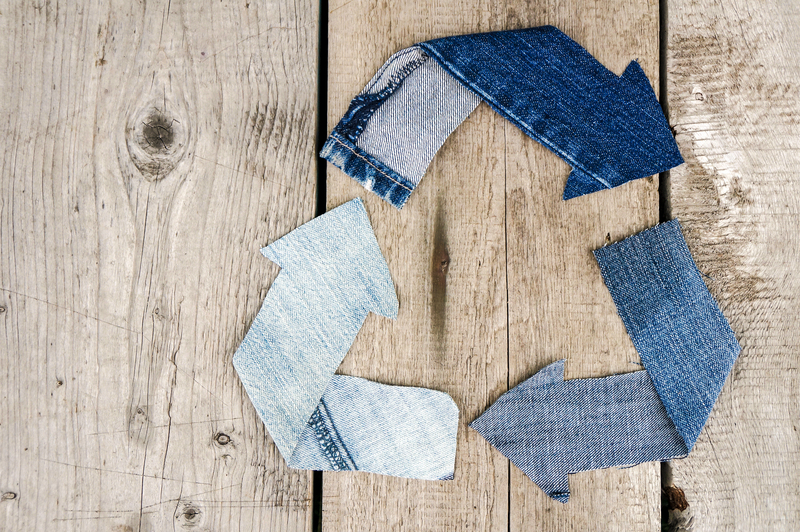Health First: Recognize and Avoid These Hazardous Plastics
Your health should always be your top priority. Today, more and more research points to the hidden dangers lurking in everyday plastics. From food packaging to household products, certain plastics can introduce harmful chemicals into our bodies and the environment. This comprehensive guide will help you recognize and avoid hazardous plastics, putting your health first.

Why Should You Be Concerned About Hazardous Plastics?
Plastics, hailed as one of the twentieth century's biggest innovations, are now a primary concern when it comes to health and environmental safety. They are everywhere — in your kitchen, your water bottles, children's toys, and even in your clothing. However, not all plastics are created equal. Some plastics can leach dangerous chemicals like bisphenol-A (BPA), phthalates, and other toxic additives that are suspected of being endocrine disruptors, carcinogens, and neurotoxins.
Recognizing and avoiding hazardous plastics is a critical first step towards safeguarding your well-being and that of your family. In this article, we'll explore:
- How to identify unsafe plastics using recycling numbers and codes
- The health risks associated with common plastics
- Safe alternatives and lifestyle changes to minimize exposure
- Tips for responsible plastic disposal and recycling
Understanding Plastic Identification Codes
Most plastic items feature a recycling code, a number inside a triangle of arrows, usually located at the bottom. These plastic identification codes are key to knowing which plastics are hazardous and which are safer for everyday use.
What Do the Plastic Numbers Mean?
- 1 - PET or PETE (Polyethylene Terephthalate): Common in single-use water bottles and food packaging. Safe for single use but can harbor bacteria and leach antimony if reused or heated.
- 2 - HDPE (High-Density Polyethylene): Found in milk jugs, detergent bottles. Generally considered safe and recyclable.
- 3 - PVC (Polyvinyl Chloride): Used in plumbing pipes, some toys, and clear food packaging. Contains phthalates and other toxic chemicals; known to be hazardous.
- 4 - LDPE (Low-Density Polyethylene): Used in plastic bags and wraps. Considered safe but rarely recycled.
- 5 - PP (Polypropylene): Found in yogurt containers, straws, and bottle caps. Considered safe and heat-resistant.
- 6 - PS (Polystyrene or Styrofoam): Used in disposable cups, plates, and takeout containers. Can leach styrene, a possible human carcinogen.
- 7 - Other (includes Polycarbonate, BPA, and Others): Found in some baby bottles, reusable water bottles, and food containers. Can contain hazardous BPA or similar chemicals unless marked BPA-free.
The Most Hazardous Plastics to Avoid
For the health-conscious consumer, it's crucial to recognize and avoid these hazardous plastics. Three types in particular have been flagged by health organizations and scientists for their potential risks:
Polyvinyl Chloride (PVC) - Plastic #3
- Where is it found? Food packaging, cling wraps, children's toys, plumbing pipes, shower curtains.
- Risks: Contains additives like phthalates, lead, and cadmium. These chemicals can interfere with hormonal balance, contribute to developmental issues in children, and even increase cancer risk.
Tip: Avoid products labeled with #3 or "V". Opt for alternatives like glass or stainless steel for food storage.
Polystyrene (PS) - Plastic #6
- Where is it found? Disposable coffee cups, takeout containers, packing peanuts, egg cartons.
- Risks: Can leach styrene, particularly when heated. Styrene is linked with nervous system effects, and chronic exposure has been associated with certain cancers.
Tip: Never microwave food in polystyrene containers. Instead, use ceramic or glass alternatives, especially for hot foods and beverages.
Polycarbonate & Other Plastics Containing BPA - Plastic #7
- Where is it found? Sports water bottles, baby bottles, food storage containers, some canned food linings.
- Risks: May contain bisphenol-A (BPA), which is an endocrine disruptor tied to reproductive issues, developmental delays in children, and an elevated risk of certain cancers.
Tip: Look for "BPA-free" on products. However, note that some BPA-free plastics use similar chemicals like BPS, which may also be harmful. When in doubt, choose glass or stainless steel.
Hidden Risks of Everyday Plastic Use
It's not only the type of plastic that matters, but also how you use it. Microwaving, dishwashing, or exposing plastics to sunlight and heat can accelerate the leaching of chemicals into your food and drinks. Reusing single-use plastics, particularly bottles and containers not designed for multiple uses, can significantly increase your exposure to hazardous substances.
Common Sources of Exposure
- Plastic water bottles: Reusing single-use PET bottles can lead to bacterial contamination, as well as leaching of antimony and other chemicals, especially when exposed to heat or sunlight.
- Food containers and wraps: Handling hot, fatty, or acidic foods in plastics (particularly PVC and PS) can accelerate chemical migration.
- Children's toys: Cheaper plastic toys and teething rings can contain phthalates and lead, substances directly ingested by infants who put these items in their mouths.
- Plastic utensils: Disposable plastic cutlery and plates may release microplastics and toxins when used with hot or acidic foods.
Stay vigilant by regularly inspecting the labels and recycling codes on plastic products you bring into your home. Choose wisely and prioritize your family's health.
How Hazardous Plastics Affect Your Health
Mounting scientific evidence highlights a wide range of health risks posed by hazardous plastics and their chemical components. Here are some of the most concerning:
- Endocrine Disruption: Chemicals like BPA and phthalates can interfere with hormone production, leading to reproductive issues, early puberty in children, and increased risk of hormone-related cancers.
- Neurotoxicity: Exposure to certain plasticizers and solvents can impact brain development, especially in fetuses and young children.
- Carcinogenicity: Some plastic additives are confirmed or suspected carcinogens, contributing to the development of cancer over prolonged exposure.
- Respiratory Issues: Inhalation of microplastics and chemical vapors (e.g., from burning plastics) can aggravate asthma and other respiratory conditions.
- Metabolic Disorders: Links have been found between plastic chemicals and the risk of obesity, diabetes, and metabolic syndrome.
Practical Guide to Avoiding Hazardous Plastics
Protecting your health is easier than you might think with a few practical changes. Recognize and avoid hazardous plastics with these actionable strategies:
1. Switch to Safe Alternatives
- Opt for glass, stainless steel, or ceramic containers for food and beverages. These do not leach chemicals, even when heated or cleaned repeatedly.
- Use wooden or metal utensils instead of plastic ones, especially for hot or acidic foods.
- Choose BPA-free products, but remember, "BPA-free" is not always a guarantee of safety. When possible, avoid plastic altogether for food contact.
2. Be Mindful at the Grocery Store
- Buy fresh, unpackaged produce. Avoid pre-cut fruits and vegetables sold in plastic containers.
- Bring your own reusable bags and containers to reduce reliance on disposable plastics, especially PVC wraps or polystyrene trays.
- Choose products packaged in paper, glass, or metal over plastic.
3. Handle Plastics Properly
- Avoid microwaving food in plastic containers. Even "microwave-safe" plastic can break down over time, releasing chemicals.
- Don't wash plastics in hot water or put them in the dishwasher. Heat accelerates the breakdown of plastic and leaching of toxic compounds.
- Don't reuse single-use plastics. Single-use bottles and containers degrade rapidly with reuse and can harbor harmful bacteria.
4. For Parents: Choose Safe Toys and Feeding Products
- Use baby bottles and feeding products made from glass or approved BPA-free plastics.
- Avoid cheap plastic toys, especially those that smell strongly of chemicals or lack labeling and safety certifications.
5. Recycle Responsibly
- Check your local recycling guidelines. Not all plastics are recyclable. PVC (3), polystyrene (6), and polycarbonate (some 7) are often not accepted.
- Separate hazardous plastics from your recycling stream to prevent contamination and health risks during sorting and processing.
- Reduce overall plastic usage. The best solution is to use less, whenever possible.
Spotting Safer Plastics
When plastic use is unavoidable, look for the following safer options:
- HDPE (2): Durable and resistant to chemical leaching. Common in milk jugs and detergent bottles.
- LDPE (4): Used for frozen food bags and squeezable bottles. Generally considered safe, but rarely recycled.
- PP (5): Heat-resistant and durable. Used for yogurt containers, bottle caps, and some baby bottles.
Always seek clarification from manufacturers and look for certifications where appropriate.

Toward a Healthier, Plastic-Wise Lifestyle
The global problem of plastic pollution begins at home — with everyday choices that either support or harm our health and the planet. A health-first approach to plastic means staying informed, making better purchasing choices, and advocating for safer products in your community.
- Support local and national legislation that limits the use of hazardous plastics in food, toys, and consumer products.
- Educate friends and family about the recycling codes and health risks associated with plastics.
- Encourage local businesses to switch to safer packaging options and reduce unnecessary plastic use.
Remember: Every mindful choice counts. When you recognize and avoid hazardous plastics, you're not only protecting your own wellbeing but also contributing to a healthier, more sustainable future.
Frequently Asked Questions About Hazardous Plastics
- Can I still use plastic if it's labeled "microwave-safe"?
"Microwave-safe" indicates the plastic won't melt in the microwave, but it doesn't guarantee that it won't leach chemicals. For hot foods and drinks, glass or ceramic is always safer. - Are "BPA-free" plastics safe?
Not necessarily. Some replacements, like BPS and BPF, have similar health impacts. When possible, choose non-plastic alternatives. - Is recycling enough to solve the problem with hazardous plastics?
Recycling helps reduce waste but isn't a complete solution. Many hazardous plastics can't be recycled, and the process doesn't remove dangerous chemicals already present.
Conclusion: Put Your Health First by Avoiding Hazardous Plastics
Our reliance on plastics has undeniable consequences for health and the environment. By learning how to recognize and avoid hazardous plastics, you take an important step toward a healthier life for yourself, your family, and the planet. Switch to safer materials, handle plastics mindfully, and choose products with your health — and future generations — in mind.
Prioritize your wellbeing today. Choose health first by understanding the risks and making informed decisions about what plastics you allow into your home.